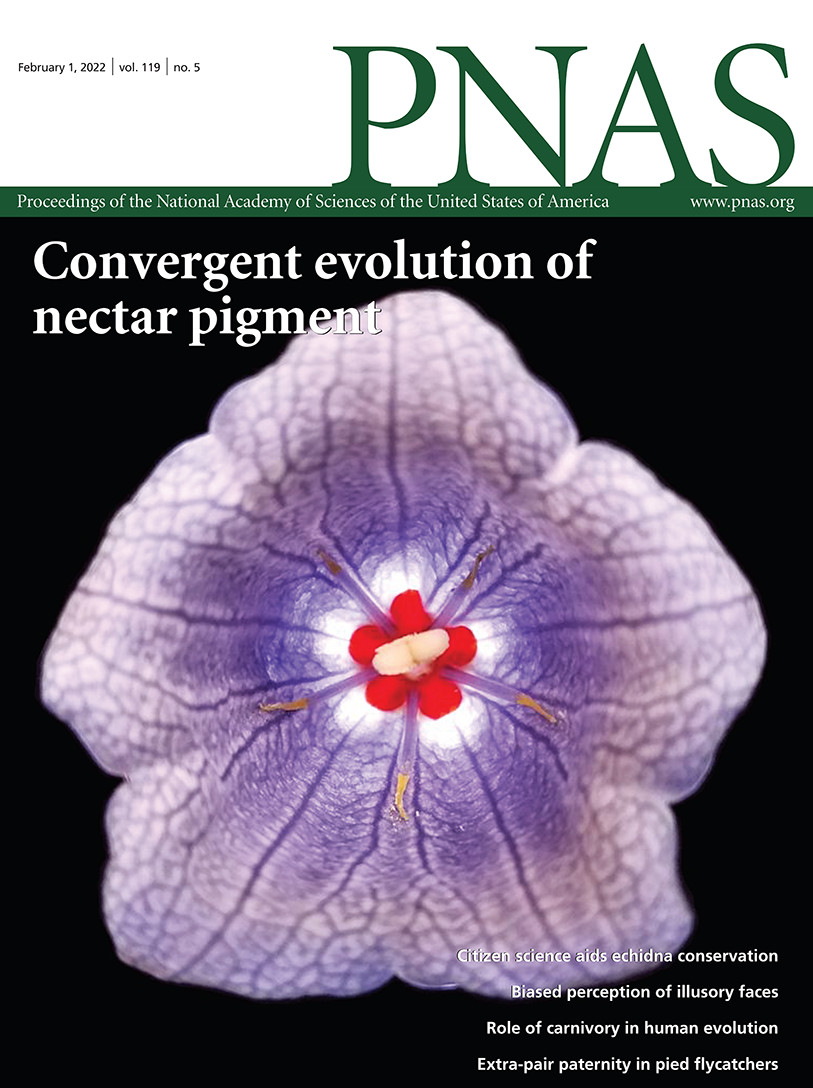Comparative genomics and biochemistry of colored nectars

The purpose of this site and corresponding databases is to disseminate results from our current project "Comparative genomics and biochemistry of colored nectars," which is funded through NSF's Plant Genome Research Program (Award #2025297)

OVERVIEW
Plant-pollinator interactions have at least partially driven the massive species radiation observed in the angiosperms, leading not only to extreme diversification in flower size and morphology, but also the accompanying chemistries behind attractants (color and scent) and rewards (nectar and pollen). Although rare, one floral trait that has evolved multiple times is colored nectar, which is suggested to serve as an ‘honest’ visual cue of a reward to prospective pollinators. Approximately 70 plant species are known produce colored nectars, but the identities of these pigments, their associated syntheses, and true biological functions, have not been described. To address this gap in knowledge, the overarching aim of this project is to understand the diversity, synthesis, and function of nectar pigments within a phylogenetic and evolutionary framework.
NEWS:
Fall 2023: We described a new automated apparatus to monitor bee visitation to food sources.
July 2023: In association with Mark Sanders and the University Imaging Centers at the University of Minnesota, we published a new manuscript on an improved method to image plant tissues, with a focus on the vasculature.
July 2023: Evin Magner's talk on Melianthus nectar was awarded the Best Oral Presentation of the Phytochemical Section at Botany 2023. Congratulations, Evin!
April 2023: Matthew Zimmerman and Evin Magner presented their work on colored nectars at the meeting of the Midwest Section of the American Association of Plant Biologists in Ames, Iowa.
Spring 2023: Our manuscript on the black nectar of Melianthus flowers has been published in New Phytologist and was highlighted in a very nice commentary. Congratulations, Evin!
March 2023: Clay gave two talks on colored nectars in New Zealand.
Spring 2022: Our manuscript on Nesocodon and Jaltomata nectars was featured on the cover of PNAS. Convergent evolution of a blood-red nectar pigment in vertebrate-pollinated flowers.

May 2021: Anzu Minami published a new paper in The Plant Journal: A cell wall invertase controls nectar volume and sugar composition. Congratulations, Anzu!
March 2021: Tony Schmitt and Rahul Roy have published a new paper in Current Opinion in Insect Science: Nectar antimicrobial compounds and their potential effects on pollinators. Congratulations, Tony and Rahul!
January 2021: Elizabeth Chatt has published a new paper in Plant Physiology: Nectar biosynthesis is conserved among floral and extrafloral nectaries. Congratulations, Elizabeth!
November 2020: Erik Solhaug has published a new paper in The Plant Journal: The role of alanine synthesis and nitrate-induced nitric oxide production during hypoxia stress in Cucurbita pepo nectaries. Congratulations, Erik!
September 2020: Welcome to Evin Magner! Evin will be working on colored nectars.
June 2019: Erik Solhaug has published a new paper in Plant Physiology entitled Carbohydrate metabolism and signaling in squash nectaries and nectar throughout floral maturation. Congratulations, Erik!
May 2019: Congratulations to Drs. Elizabeth Chatt and Erik Solhaug for successfully defending their dissertations! Both are moving onto postdoctoral positions -- Elizabeth will be joining Prof. Rick Vierstra (WUSTL) in St. Louis and Erik will be moving to Switzerland to work in Prof. Sam Zeeman's lab (University of Zurich). We thank them for their hard work on this project and wish both the best of luck!
February 2019: New publication in Plant Direct: An integrated transcriptomics and metabolomics analysis of the Cucurbita pepo nectary implicates key modules of primary metabolism involved in nectar synthesis and secretion
August 2018: Elizabeth Chatt, Jason Thomas and Clay Carter gave talks at Plant Biology 2018 in Montreal
September 2018: New publication in Journal of Experimental Botany: The major nectar protein of Brassica rapa is a non-specific lipid transfer protein, BrLTP2.1, with strong antifungal activity. Congratulations to Tony Schmitt!
August 2018: New publications in Frontiers in Plant Science:
The octadecanoid pathway, but not COI1, is required for nectar secretion in Arabidopsis thaliana
Using nectar-related traits to enhance crop-pollinator interactions
New publication appearing in BMC Plant Biology: The pennycress (Thlaspi arvense L.) nectary: structural and transcriptomic characterization
New publication appearing in Plant Science: Nectar biology: From molecules to ecosystems
Publication appearing in Molecular Plant: A role for GIBBERELLIN 2-OXIDASE6 and gibberellins in regulating nectar production
Publication appearing in Nature: Nectar secretion requires sucrose phosphate synthases and the sugar transporter SWEET9
Publication featured on the cover of The Plant Journal: PIN6 is required for nectary auxin response and short stamen development
NOTE: This site also contains information from our prior study "Functional genomics of nectar production in the Brassicaceae," (NSF Award #0820730). The goal of this study was to identify genes, cellular structures, and molecular processes underlying nectar production in representative Brassicaceae (mainly Arabidopsis thaliana and Brassica rapa).
